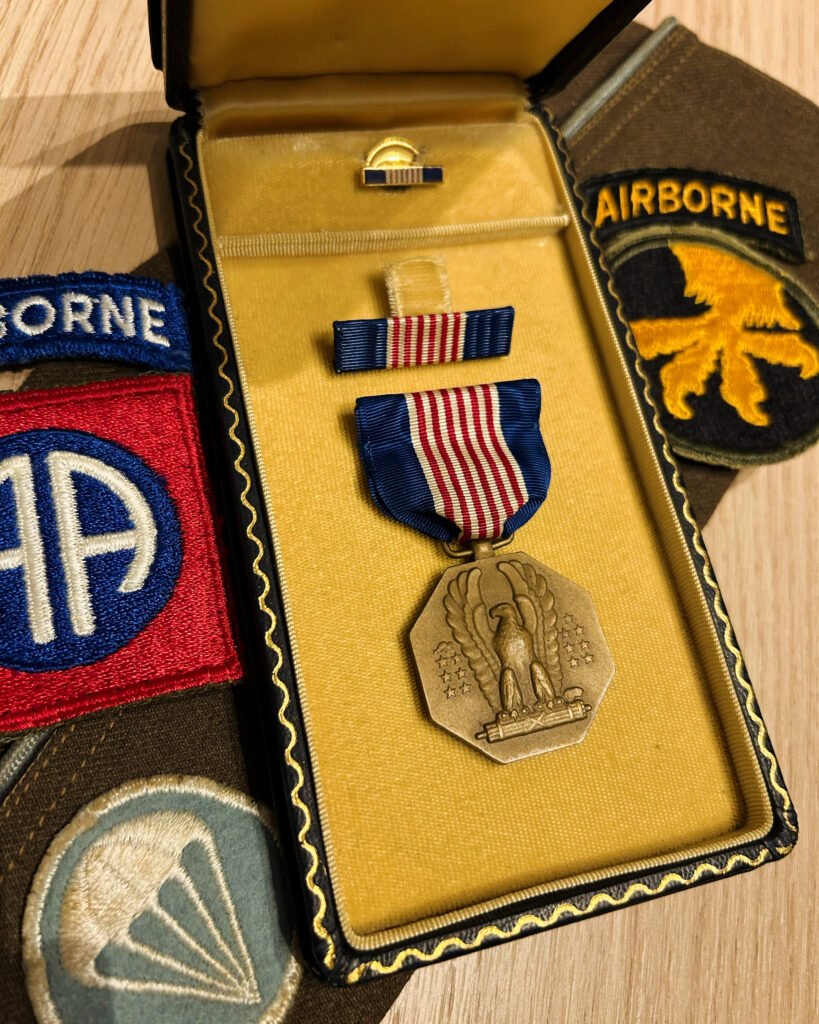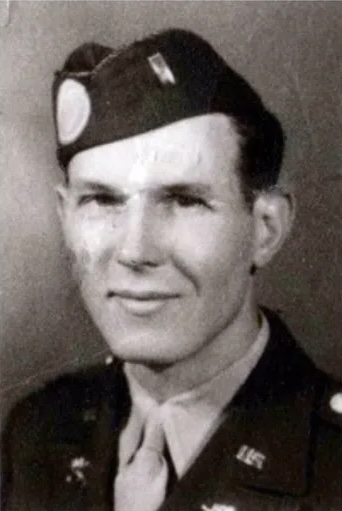This article is meant to collect accounts of all US WWII paratroopers who earned the Soldier’s Medal. After buying an original WWII slot brooch Soldier’s Medal and case, I thought it would be interesting to create a kind of ‘hall of fame’ of all paratroopers who received one.
This medal is quite rare compared to all other combat decorations, because it was awarded for heroism not involving combat. For example, in the 508th PIR, only 7 were awarded the Soldier’s Medal.
The Soldier’s Medal was worn after the Medal of Honor (1), the Distinguished Service Cross (14), then the Distinguished Service Medal (0), the Legion of Merit (3), the Silver Star (118), and before the Bronze Star (378). The numbers between brackets are the numbers of awards for the 508th PIR during WWII, in order to give an idea of the rarity of this decoration.
Heroism not involving combat often involved rescuing civilians or other servicemen from fire or drowning, but surely, each citation will be worth reading.

508th PIR
I started off with the 508th PIR, 82nd Airborne Division, as this is the only unit I could find a list of names for in all of my reference books. The History of the 508th Parachute Infantry says 7 Soldier’s Medals were awarded, but it only lists 6 names. Checking the 508thPIR.org website, it lists 9 names in total, of which the 6 mentioned here first received the award in 1944, all apparently by the same General Order 35, which is curious. Surely, the acts of non-combat heroism for which they were awarded didn’t all occur in the same period? Two others were awarded in 1990 and 1 other is unknown and based on the Devils Digest, June 17, 1943.
1st Lt Robert M. Mitchell

Robert Mazyck Mitchell received a great write-up from a relative on this page, which also includes some interesting background about the 508th PIR. Unfortunately, there’s no concrete explanation for his Soldier’s Medal.
There’s another short summary of him here on the 508thPIR.org site, but nothing else. He apparently received his Bronze Star by General Order 36, so that would have been after GO 35 for the Soldier’s Medal.
2nd Lt Edwin E. Bennett Jr
All I could find about Edwin Bennet was this page, but again no information about his Soldier’s Medal either. What is interesting, though, is that he was apparently rewarded the Silver Star by the same General Order 35 as his Soldier’s Medal. I checked the other names of Silver Star recipients, but Edwin is the only man in this list who received both decorations, and at the same time.
Sgt Roland W. Fecteau
Roland Fecteau lies buried in the Ardennes American Cemetery, but he died in September 1944, so not during the Battle of the Bulge. He died in Holland, for which he was posthumously awarded the Purple Heart. In August 1944, he also earned the Combat Infantryman Badge (CIB).
PFC Robert K. Mills
Not much here either. Just this link on Fold3, but I need a paid subscription to find out more. On 14 September 1944, so just before Market Garden, he earned the Combat Infantryman Badge (CIB). Later in 1944, he also received a Bronze Star Medal by GO 76.
PFC John R. Taylor
List of his decorations on Traces of War. On 14 September 1944, so just before Market Garden, he earned the Combat Infantryman Badge (CIB), the same day as PFC Robert K. Mills above. They served in the same unit: Company B, although only Taylor appears on the roster of Company B on and after D-Day, so Mills must have joined afterwards.
Pvt Ernest W. Chase
Pvt. Chase was killed in action on January 7, 1945 and was awarded the Purple Heart. This was in the Ardennes. He also posthumously received the CIB by GO 31.
T/4 William R. O’Keefe

He is the soldier who did not make the list in the unit history, but his Soldier’s Medal was mentioned in The Devils Digest of June 17, 1943. In fact, it’s the first actual story I found of why the medal was awarded. The 23 year old O’Keefe earned the medal by saving the life of Frank Lyons from the ominously named Drowning Creek, near Camp Mackall. He rescued his buddy from drowning, both being weighed down by their equipment.
William was a member of HQ Company 1st Battalion during WWII and re-enlisted in 1945. When the Army Air Corps split off as the newly founded Air Force in 1947 it opened up new opportunities. William switched services and became a Chief Warrant Officer as a result.
Contribute your stories
As you can see, many WW2 airborne and glider units are still missing. This will be a long work in progress, but I’m sure the stories are all out there somewhere. If you have any material, even if only a name and unit, this will be something to start from. Any input is greatly appreciated!

